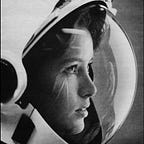To Create a Universe in a Lab
How mankind could create its own artificial multiverse
There are calculations which say the universe weighed 10 pounds (4.5 kg) and was no bigger than 10-²⁶ centimeters across before it stretched and sprawled into the great, heaving landscape we know of today. It’s strange to imagine that billions of fiery-tipped stars and billions of husky blue or rosy galaxies could emerge from such a negligible beginning — a point so small it was invisible to the naked eye and yet with enough weight to it that you could feel it pressing into the palms of your hands, encasing within that gaunt little area the necessary materials for the cosmos and all its ornaments. The Earth, too, being one of these ornaments and the eventual birthplace of toiling life. A vast and studded 46.5 billion lightyears of universe, and all of it possibly having weighed so little you could carry it in your arms.
This hot, dense point then underwent rapid expansion early on in its history. The inflation would have occurred due to repulsive gravity, a characteristic made possible by the laws of general relativity. But to create a universe artificially wouldn’t even require the initial 10 pounds of matter; just a hundred-thousandth of a gram would be enough to create an ever expanding universe similar to ours. The child universe would develop its own star systems and…
